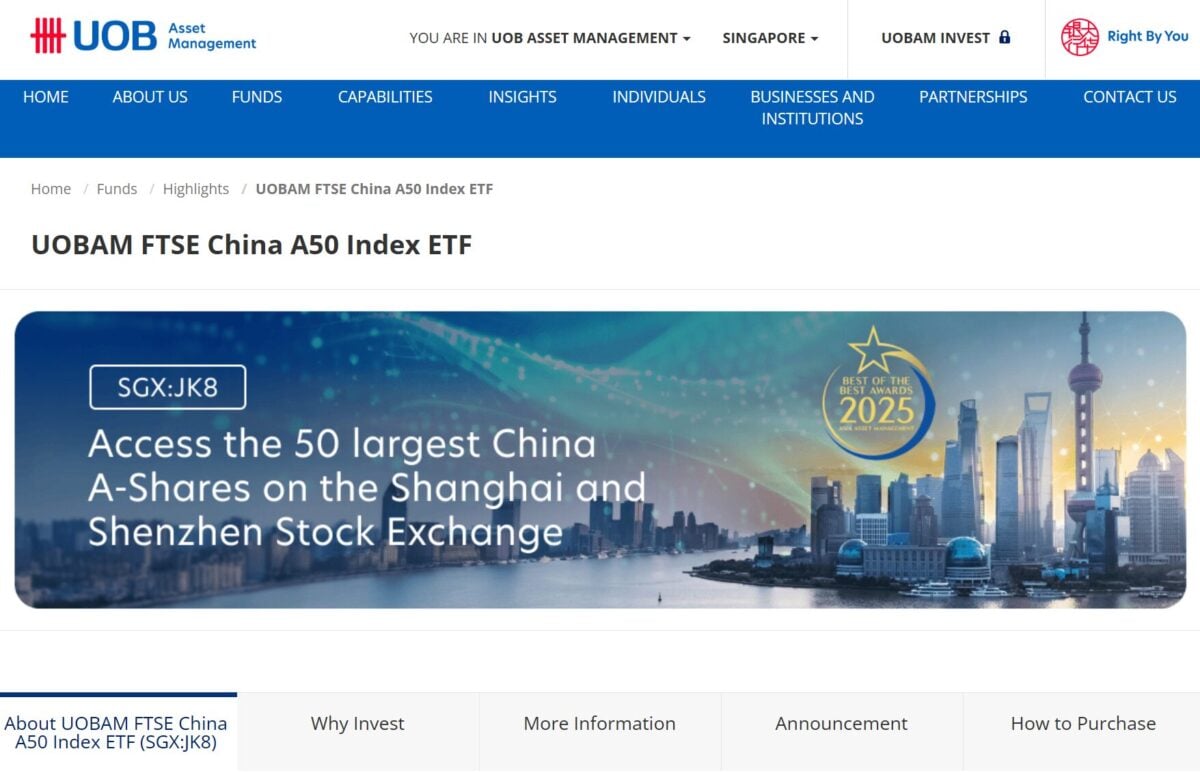I came across this article by the Straits Times recently. It profiles a few young couples, titled “On the Fast Track to $1 million”. The goal was to hit $1 million combined as a couple, and to hit it as soon as they could. $1 million by 40 is the next big thing? Hitting $1 […]
The post How to earn $1 million by age 40 (or 35)? As a Singapore Investor? appeared first on Financial Horse.
I came across this article by the Straits Times recently.
It profiles a few young couples, titled “On the Fast Track to $1 million”.
The goal was to hit $1 million combined as a couple, and to hit it as soon as they could.
Hitting $1 million net worth is an elusive milestone goal for many.
Being able to hit $1 million by a young age requires some combination of the following:
- Starting out with a high paying job (eg. Investment banking, law, tech etc)
- Rich parents
- Being aggressive (and lucky) with investments
Some of which is frankly beyond your control.
Looking at the examples in the article, it looked like most of the young couples profiled would be able to hit the goal some time in their 30s.
Which got me thinking…
Is $1 million by 40 (or 35) a realistic goal – and can we achieve it through smart financial planning?


Wealth building is a lifelong journey and there are fundamental money habits that can help you achieve your goals.
What do I mean by this?
POSB talks about 4 money habits in your financial journey: Save, Protect, Grow, and Retire.

I would say that early on in your wealth journey, the emphasis is on SAVE and PROTECT.
GROW will be important throughout your entire journey, and with the compounding effect, investing will increasingly become a critical pillar to growing wealth so that you enjoy a comfortable retirement.
Let’s discuss each money habit in more detail.
Disclosure: This post is sponsored by POSB. All views and opinions expressed in this post are from Financial Horse.
The first money habit, SAVE, is the benchmark.
This is really the no.1 principle.
If you can’t get this right, your journey will be very challenging.
You need to earn more than you spend, and start saving.
My advice for saving is to understand yourself, and identify your blind spots.
If you’re a high earner but also spend like a Boss, then you want to have a realistic chat with yourself on whether you should be spending less, or whether you should be earning even more (so that you can save more even after your spending).
If you’re very good at managing expenses, that’s fantastic (pat yourself on the back and keep it up). The next step is to focus on being able to earn more.
The focus here is the differential between what you earn and what you spend.
Either you increase what you earn, or you lower what you spend – but ideally you do both.
With your liquid cash that is sitting around, you want to park them in a high yield savings account like DBS Multiplier or POSB Save As You Earn (SAYE).
You can get up to 4.1% interest these days on a high yield savings account.
On $100,000, that’s about $4,100 a year.
There’s no reason not to be doing this, otherwise you’re frankly just leaving money on the table.
Just do it.

On insurance.
My take is that at a minimum you want:
- Health (Medical) Insurance, and
- Term Insurance (pays out in event of death)
Home insurance is in my view a must-have as well (it’s a small payment that saves you a lot of headache if something goes wrong), but I know some people skip it and frankly it’s your call.
Critical Illness, Disability insurance etc are very good to haves, but ultimately a personal preference.
The reason why insurance is so important, is that it protects you against tail risks.
Let me put it this way.
If you work incredibly hard in your 20s and saved up $500,000.
And in your 30s (touch wood) you are diagnosed with cancer.
Nobody thinks this will happen to them, and yet we all have heard of people where this unfortunate scenario occurred.
If you don’t have medical insurance, the medical bill is going to wreck your financial journey.
Not only for you, but oftentimes impacting your loved ones as well.
This not something you want to be worrying about when you are sick.
So insurance is protection against tail risks, and it’s non-negotiable in my view.
Nobody is saying to get the most fanciful insurance.
Get a basic Health insurance if you don’t want to spend too much on it.
Just make sure you have one.

I would say when you’re trying to make your first million.
SAVE and PROTECT form the base pillars.
You want to earn more than you spend, save that money, and protect yourself from tail risks.
Once you have sufficient emergency funds, and insurance to protect yourself against large medical bills and loss of income, you have a strong and stable base to accelerate wealth-building.
You can then concentrate on the next stage to GROW your money.
If you want a slightly higher yield on cash, yet without taking on equity style risk – consider bond funds.
Why are bond funds a useful asset class to consider?
Bond funds can serve as a stabilizing force in an investment portfolio, compared to riskier assets like standalone stocks.
Typically, it would be difficult for retail investors to access high quality corporate bonds due to high minimum purchase requirements and transaction fees.
Bond funds allow you to access a diversified bond portfolio with lower overall costs.
DBS/POSB offers a range of fixed income solutions. These bond funds below offer a higher yield that can help in your wealth building journey:
- 4.79% p.a*. portfolio yield with CIO Liquid+ fund
- 4.66% p.a.* portfolio yield with Nikko Short Term Bond fund
- 4.23% p.a* portfolio yield with DBS digiPortfolio
*as of 30 September 2024.
More details below.
I would say if you’re in the early stages of wealth building, the goal for investing is primarily to build knowledge and experience, and not so much on the returns itself.
This knowledge and experience will compound multi-fold in the later stages of wealth building.
So at this initial stage, go out and experiment with different asset classes, and don’t be afraid to take on some risk.
It is only with experimentation that you can learn what kind of investor you are, what type of asset classes you are comfortable managing.
All these experiences will help build up confidence and expertise – all of which will stand you in good stead in the future.
At this stage in your life, the losses are relatively more manageable.
You would much rather lose money at this stage in your life (while you’re younger with less dependants + increasing earning potential), than in retirement.
Any lessons you learn early on at this stage, will also serve you throughout your lifetime – and there is a lifetime of compounding wealth to go.
After all, investing is a lifelong journey.
Assuming you followed the steps above.
You would have started to gain some momentum in your wealth building journey.
What next?
Continue to build on the fundamentals – which is SAVE and PROTECT.
But now, you would have also gained more confidence as an investor.
With more clarity on your investment style and strategy, you can choose to ramp up GROW even further.
One of the key questions that you may want to ask yourself – especially as you have passed the initial experimentation stage.
Ask yourself – do you prefer to be a passive or an active investor?
If you’re passive, then you can focus on building up stakes in diversified low-cost ETFs like the S&P500 or an all-world index.
If you’re active, then you need to commit to doing whatever it takes to understanding investing, and to outperform the market.
For obvious reasons I myself am an active investor.
And I would say if you can master investing, the monetary payoffs can be extremely rewarding.
But I would also say that active investing is not for everyone.
It’s a long and tough journey, with a lot of complexity to master.
Whether you choose a more passive or active approach (or a little bit of both), the end result is still to GROW.
You want to focus on growing your money, and investing is the critical piece of the puzzle here.
POSB offers a range of fixed income solutions that you can consider to GROW your money.

DBS CIO Liquid+ Fund: Portfolio Yield 4.79% p.a.*
DBS CIO Liquid+ is a diversified bond fund that aims to deliver returns that outperform money market fund returns.
The highlight is the flexibility of daily liquidity. You can redeem your investment anytime without penalty fees, and also receive quarterly dividends.
Nikko Short Term Bond Fund: Portfolio Yield 4.66% p.a.*
The Nikko Short Term Bond Fund invests in short-term bonds, such as government and corporate bonds.
It offers potential yield enhancement over CPF/SRS and money market fund rates.
SaveUp Portfolio: Portfolio Yield 4.23% p.a.*
SaveUp is a readymade portfolio of high-quality fixed income funds, offering diversification, and low management fees.
*as of 30 September 2024
I did a more detailed review on these bond funds previously, so do check it out for more details.
To counter inflation and grow wealth for the long term, accumulating high quality assets is key.
You can do this by building a diversified investment portfolio of real estate, stocks and REITs, ETFs, bonds, unit trusts etc.
You can also consider supplementing with insurance savings plans e.g. endowments and annuities.
As discussed above, you can choose a more active management style or passive style depending on your investment personality, as well as the type of investment according to your risk appetite.
The key is to just keep going.
Dollar-cost averaging is a good technique to consider as it ensures you stay on track to reach your investment goals.
This is because the impact of compounding becomes more dramatic the longer you stay invested.
Even small, consistent investments can grow into substantial sums through compounding.
The key is to remain patient and allow time to maximize compounding’s wealth-building potential.

With Invest-Saver, you can set up a regular savings plan to GROW your money.
You can start with small sums of money.
The key is to make investing a priority and keep going.
Invest-Saver allows you to invest in different investment products, including ETFs, Unit Trusts and managed portfolios (digiPortfolio).
Plus, enjoy zero fees for 6 months when you set up a regular savings plan on DBS digiPortfolio, Unit Trusts or ETFs!
Terms and Conditions apply. Find out more here.
In the last stage of wealth journey, you would have built up a sizeable nest egg and investment portfolio.
Now, you’re starting to think of retirement.
What next?
In the USA, there is a retirement guideline rule of thumb called the “25x rule”.
The idea is that if you save up 25 times of your annual expenses, you have enough money to retire.
So for instance, if your annual spending is $100,000.
Then once you have $2.5 million you are “financially secure”.
As long as your investments return 4% a year, that’s $100,000 a year or enough for you to get by.
That’s what retirement experts call the “Safe Withdrawal” Rule – and 4% is viewed as generally safe.
The 25x rule is a guideline that can be used to think about your ideal retirement sum.
Some people may choose to lower their expenses to adjust to a reduced income in retirement.
While others may also try to boost their passive income flows.
As Singaporeans, fortunately for us, we have the benefit of CPF so this usually forms the starting point when think about retirement.
You can use CPF board’s retirement calculators to get a clearer picture of what retirement can look like for you.
In addition to CPF, for many retirees, the goal is to have an investment portfolio that generates passive income flows.
This portfolio can include real estate (e.g. rental property), blue-chip stocks and REITs that generate yield, government bonds (e.g. SSBs, T-Bills), bonds (e.g. corporate bonds, retail bonds, bond ETFs, bond funds), as well as retirement income plans (e.g. annuities) etc.
Thus, not only do you have your basic needs covered, you have some additional cash flow for comfortable living.

So there you have it!
My take on how to earn $1 million by age 40 (or 35).
POSB’s 4 Money Habits is an excellent way to visualise the 4 key quadrants of wealth building:
- Save
- Protect
- Grow
- Retire

If you want to GROW your money, DBS Invest-Saver plan is a good option to consider.
Enjoy zero fees for 6 months when you set up a regular savings plan on DBS digiPortfolio, Unit Trusts or ETFs!
Find out more here.
Terms and Conditions apply.
Ready to build better money habits? Start your journey with the POSB Money Habits Tracker and transform your finances.
Would love to hear what you think, share your thoughts in the comments below!
Disclaimers:
The content here is for informational purposes only and should NOT be taken as legal, business, tax, or investment advice. It does NOT constitute an offer or solicitation to purchase any investment or a recommendation to buy or sell a security. In fact, the content is not directed to any investor or potential investor and may not be used to evaluate or make any investment. Do note that this is not financial advice. If you are in doubt as to the action you should take, please consult your stock broker or financial advisor.
Disclosure: This post is sponsored by POSB. All views and opinions expressed in this post are from Financial Horse.
This advertisement has not been reviewed by the Monetary Authority of Singapore.
Deposit Insurance Scheme
Singapore dollar deposits of non-bank depositors and monies and deposits denominated in Singapore dollars under the Supplementary Retirement Scheme are insured by the Singapore Deposit Insurance Corporation, for up to S$100,000 in aggregate per depositor per Scheme member by law. Monies and deposits denominated in Singapore dollars under the CPF Investment Scheme and CPF Retirement Sum Scheme are aggregated and separately insured up to S$100,000 for each depositor per Scheme member. Foreign currency deposits, dual currency investments, structured deposits and other investment products are not insured.
Investments
All investments come with risks and you can lose money on your investment.
This information is for general information only and should not be relied upon as financial advice. This publication may not be reproduced, or communicated to any other person without prior written permission.
This information does not take into account the specific investment objectives, financial situation or needs of any particular person. Before entering into any transaction involving any product mentioned in this publication, where applicable, you should seek advice from a financial adviser regarding its suitability for your own objectives and circumstances. If you choose not to do so, you should make an independent assessment and do your own due diligence on the product. This information does not constitute or form part of any offer, recommendation, invitation or solicitation to subscribe to or to enter into any transaction. It is not intended to provide, and should not be relied upon for accounting, legal or tax advice.
All investments come with risks and you can lose money on your investment. Invest only if you understand and can monitor your investment. Diversify your investments and avoid investing a large portion of your money in a single product issuer.
The information herein is not intended for distribution to, or use by, any person or entity in any jurisdiction or country where such distribution or use would be contrary to law or regulation.
Unit Trusts
This article (collectively the” Information”) is provided to you for your private use only and are purely indicative and for discussion purposes only. The Information is not and does not constitute or form part of any offer, recommendation, invitation or solicitation to you to subscribe to or to enter into any transaction as described, nor is it calculated to invite or permit the making of offers to the public to subscribe to or enter into any transaction for cash or other consideration and should not be viewed as such.
The Information may be incomplete or condensed and it may not include a number of terms and provisions nor does it identify or define all or any of the risks associated to any actual transaction. Any terms, conditions and opinions contained herein may have been obtained from various sources and neither DBS Bank Ltd. nor any of its related companies or affiliates nor any of their respective directors or employees (collectively the “DBS Group”) make any warranty, expressed or implied, as to its accuracy or completeness and thus assume no responsibility of it. The Information may be subject to further revision, verification and updating and DBS Group undertakes no responsibility thereof.
Figures and amounts stated are for illustration purposes only and shall not bind DBS Group. DBS Group does not act as an adviser and assumes no fiduciary responsibility or liability for any consequences, financial or otherwise, arising from any arrangement or entrance into any transaction in reliance on the information contained herein. The Information does not have regard to the investment objectives, financial situation and particular needs of any specific person. In order to build your own independent analysis of any transaction and its consequences, you should consult your own independent financial, accounting, tax, legal or other competent professional advisors as you deem appropriate to ensure that any assessment you make is suitable for you in light of your own financial, accounting, tax, and legal constraints and objectives without relying in any way on DBS Group or any position which DBS Group might have expressed in this document or orally to you in the discussion.
Companies within the DBS Group or the directors or employees of the DBS Group or persons/entities connected to them may have positions in and may affect transactions in the underlying product(s) mentioned. Companies within the DBS Group may have alliances or other contractual agreements with the provider(s) of the underlying product(s) to market or sell its product(s). Where companies within the DBS Group are the product provider, such company may be receiving fees from the investors. In addition, companies within the DBS Group may also perform or seek to perform broking, investment banking and other banking or financial services to the companies or affiliates mentioned herein.
The Information may include quotation, comments or analysis. Any such quotation, comments or analysis have been prepared on assumptions and parameters that reflect our good faith, judgement or selection and therefore no warranty is given as to its accuracy, completeness or reasonableness. All information, estimates, forecasts and opinions included in this document or orally to you in the discussion constitute our judgement as of the date indicated and may be subject to change without notice. Changes in market conditions or in any assumptions may have material impact on any estimates or opinion stated.
Prices and availability of financial instruments are subject to change without notice. In any event, investment involves risks and past performance is no guarantee of future results, and future results may not meet our/ your expectations due to a variety of economic, market and other factors.
The Information is not directed to, or intended for distribution to or use by, any person or entity who is a citizen or resident of or located in any locality, state, country or other jurisdiction where such distribution, publication, availability or use would be contrary to law or regulation. Investment products falling within the PRIIPS Regulation (as defined below) are not intended to be offered, sold or otherwise made available to and should not be offered, sold or otherwise made available to any retail investor in the European Economic Area (the “EEA”). For these purposes, a retail investor means a person who is one (or more) of:
i. a retail client as defined in point (11) of Article 4(1) of Directive 2014/65/EU (as amended, “MiFID II”); or
ii. (ii) a customer within the meaning of Directive 2002/92/EC (as amended the “Insurance Mediation Directive”), where that customer would not qualify as a professional client as defined in point (10) of Article 4(1) of MiFID II; or
iii. (iii) not a qualified investor as defined in Directive 2003/71/EC (as amended, the “Prospectus Directive”).
Consequently, no key information document required by Regulation (EU) No 1286/2014 (the “PRIIPs Regulation”) for offering or selling the investments or otherwise making them available to retail investors in the EEA has been prepared and therefore offering or selling the investments or otherwise making them available to any retail investor in the EEA may be unlawful under the PRIIPS Regulation. For this purpose, DBS Group will assess whether the account’s beneficial owner (or, in the case of trust accounts, the settlor) is a retail investor in the EEA.
A PRIIP is any investment where the amount repayable to the investor is subject to fluctuations because of exposure to reference values or to the performance of one or more assets which are not directly purchased by the investor.
Prospectus and Product Highlights Sheet for the Unit Trusts mentioned may be obtained from any DBS/ POSB branch. You should read the prospectus or profile statement and Product Highlights Sheet before deciding to subscribe for or purchase units in the scheme. The value of the units in the scheme and the income accruing to the units, if any, may rise as well as fall.
This information is from DBS Bank Ltd (Company Regn. No. 196800306E) (“DBS”) which is an Exempt Financial Adviser as defined in the Financial Advisers Act and regulated by the Monetary Authority of Singapore (the “MAS”).
I came across this article by the Straits Times recently. It profiles a few young couples, titled “On the Fast Track to $1 million”. The goal was to hit $1 million combined as a couple, and to hit it as soon as they could. $1 million by 40 is the next big thing? Hitting $1
The post How to earn $1 million by age 40 (or 35)? As a Singapore Investor? appeared first on Financial Horse.











